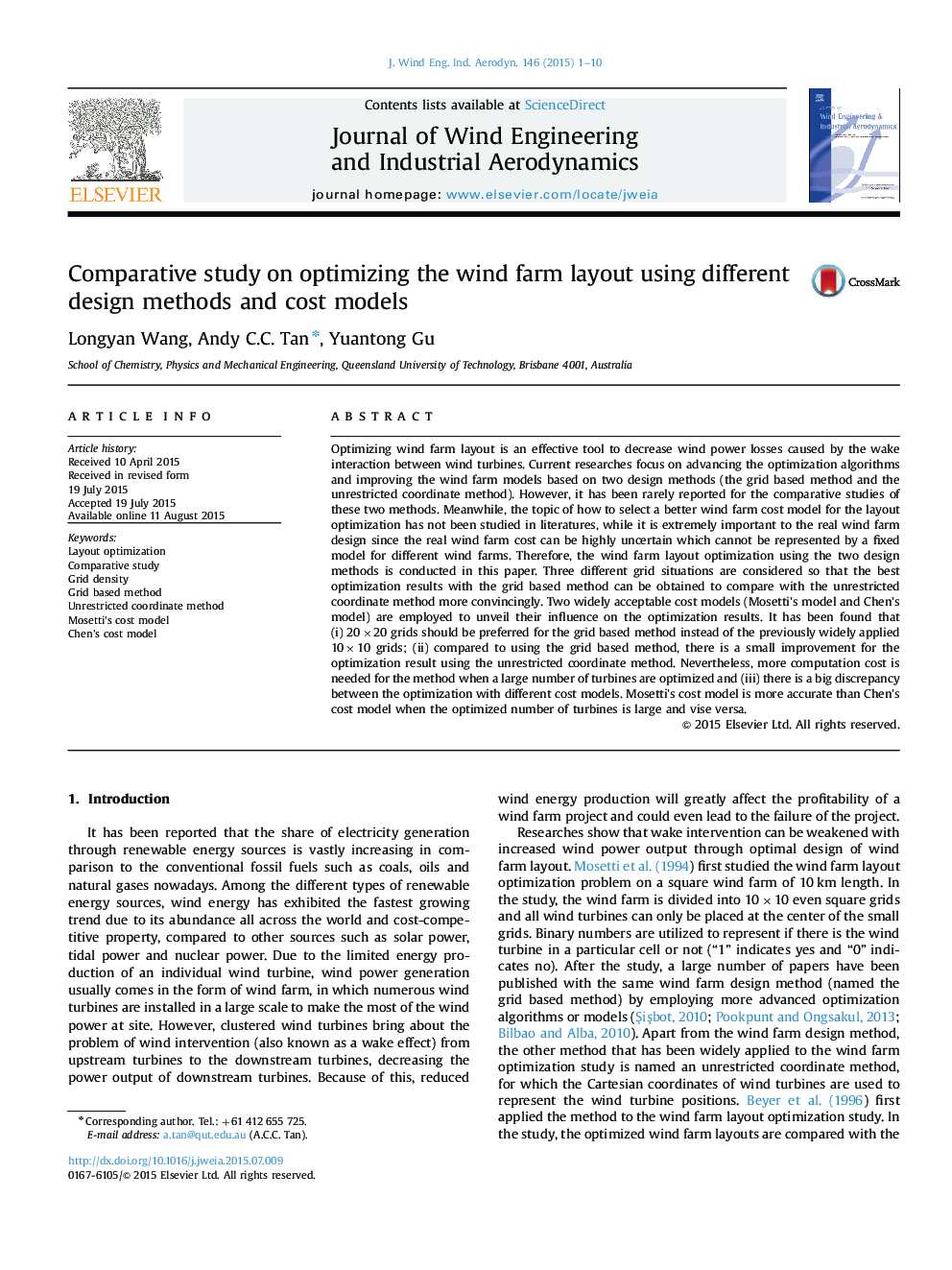| Article ID | Journal | Published Year | Pages | File Type |
|---|---|---|---|---|
| 293179 | Journal of Wind Engineering and Industrial Aerodynamics | 2015 | 10 Pages |
•Three different grid densities are applied to optimize the wind farm layout.•Optimization results using the two design methods are compared systematically.•Two wind farm cost models are employed to compare the optimization results.•20×20 grid density is the best option for the grid based method.•There is a big discrepancy for the optimization using different cost models.
Optimizing wind farm layout is an effective tool to decrease wind power losses caused by the wake interaction between wind turbines. Current researches focus on advancing the optimization algorithms and improving the wind farm models based on two design methods (the grid based method and the unrestricted coordinate method). However, it has been rarely reported for the comparative studies of these two methods. Meanwhile, the topic of how to select a better wind farm cost model for the layout optimization has not been studied in literatures, while it is extremely important to the real wind farm design since the real wind farm cost can be highly uncertain which cannot be represented by a fixed model for different wind farms. Therefore, the wind farm layout optimization using the two design methods is conducted in this paper. Three different grid situations are considered so that the best optimization results with the grid based method can be obtained to compare with the unrestricted coordinate method more convincingly. Two widely acceptable cost models (Mosetti's model and Chen's model) are employed to unveil their influence on the optimization results. It has been found that (i) 20×20 grids should be preferred for the grid based method instead of the previously widely applied 10×10 grids; (ii) compared to using the grid based method, there is a small improvement for the optimization result using the unrestricted coordinate method. Nevertheless, more computation cost is needed for the method when a large number of turbines are optimized and (iii) there is a big discrepancy between the optimization with different cost models. Mosetti's cost model is more accurate than Chen's cost model when the optimized number of turbines is large and vise versa.
